Are you buying new plants to ornament your garden or house? Have you thought about planting ferns? Climbing ferns are excellent for both indoors and out. However, the plants come with some concerns.
Many types of ferns are invasive in particular places, so planting them outside is a huge no-no. Knowing which plants are safe is a crucial aspect of gardening. Some of these invasive species could wipe out your other plants entirely.
Ferns include special care because they are flowerless and seedless plants. They duplicate themselves through spores on their fronds, making it challenging to eradicate an invasive species that gets out of hand without spraying harsh chemicals around your yard.
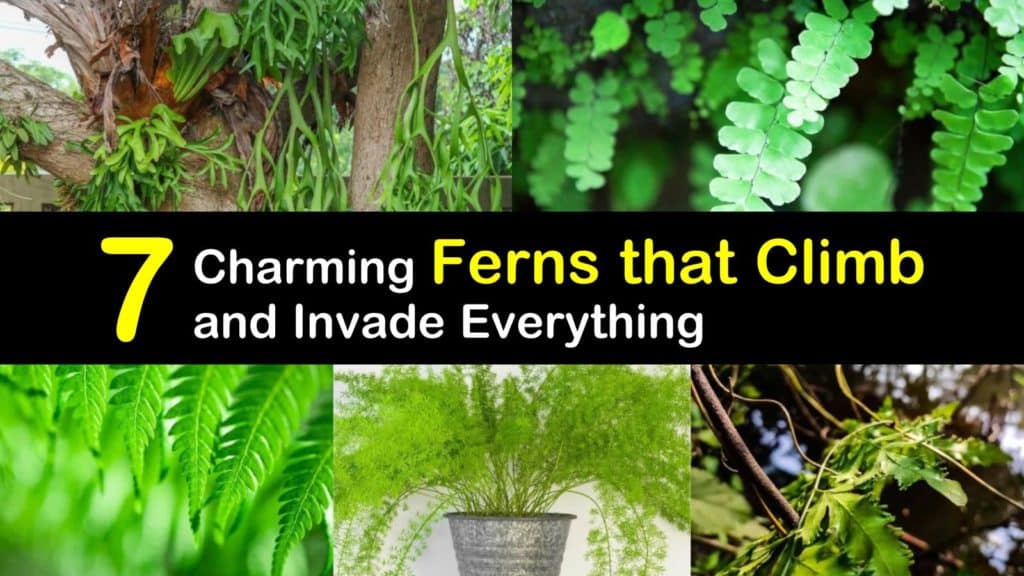
- How to Grow Lygodium Ferns
- Charming Climbing Ferns
- Japanese Climbing Fern (Lygodium japonicum)
- Old World Climbing Fern (Lygodium microphyllum) – Best for Containers
- American Climbing Fern (Lygodium palmatum)
- Bushman’s Mattress (Lygodium articulatum)
- Asparagus Fern (Asparagus densiflorus) – An Indoor Fern
- Wild Asian Fern (Lygodium circinatum)
- Staghorn Fern (Platycerium alcicorne) – Perfect for Hanging Indoors
How to Grow Lygodium Ferns
Before planting ferns outside, always check to see if your variety is dangerous. Ferns make excellent houseplants, too. Find the best evergreen ferns for your landscaping. Select the best option for your planting zone.
Over 40 species of climbing ferns exist. Most fall into the Lygodiaceae genus and Schizaeaceae, Lygodium, or Anemia families.
These families of ferns are primitive, dating back long before the dinosaurs. One characteristic they share is the large sporangia, which individually reproduce on leaflets. They have branched rhizomes underground that either clump or creep.
The grasslike ferns from the Schizaea have fertile fronds, which is where many ferns reproduce. The process, called twining, duplicates a copy of itself. Each frond then forms a vine, which provides ferns with their elegant texture.
Care Requirements
Although some tolerate drought or heat, most climbing varieties require moist soil and shade. Ferns also prefer protection from harsh sunlight and freezes.

In the early spring each year, prune the foliage to make room for new growth. Check the care needs for your specific fern before planting. Maintenance may vary based on your planting zone.
Where to Plant Climbing Ferns
The most important part of growing climbing ferns inside or out is finding the right amount of shade for your zone. Some varieties do well in containers, while others thrive outdoors. Growing trailing roses with your ferns can create quite an eye-catching focal point in the garden bed.
If you plant ferns in containers, make sure to water them regularly. Move the plants outside for the summer and back inside to protect them in winter. You might need a humidifier if your home is dry. Repot the ferns every year or two for healthy growth.
Ferns as an Invasive Species
Before planting ferns outside, check the national and regional invasive species lists. The United States Department of Agriculture (USDA) provides a list of the plants you should avoid planting in your geographical location.
The associates at your local garden center may also know the invasive ferns in your region. Never plant these types of climbing ferns outside. Invasive species spread too quickly, causing infestations.
Biological Control
You might need glyphosate to tackle invasive ferns. This chemical is an herbicide for broadleaf plants. Treat your garden in the spring and early summer.
Charming Climbing Ferns
It’s vital to find the right planting spot for ferns. Climbing ferns could take over the garden otherwise, just like vines that grow in poor soil or even optimum conditions.
Japanese Climbing Fern (Lygodium japonicum)
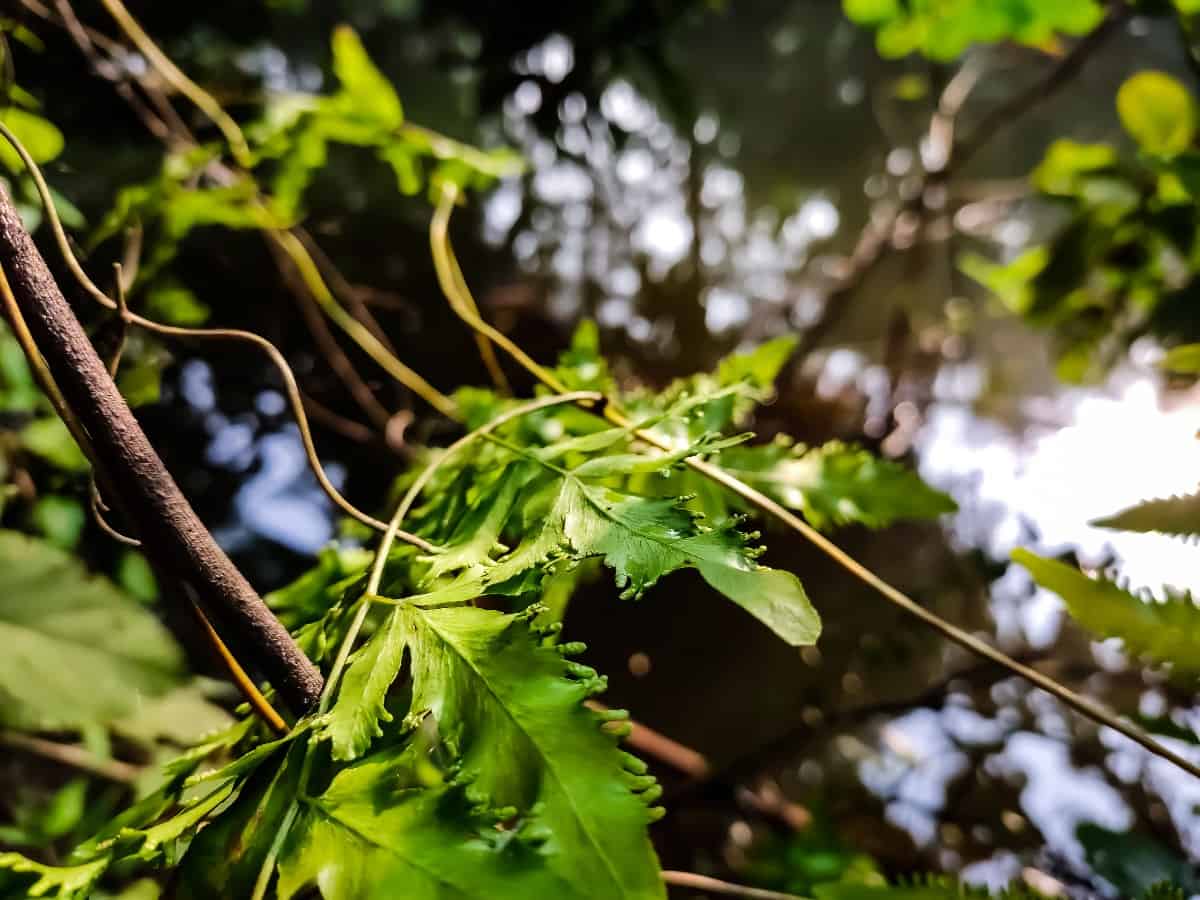
A vine-like fern, this plant is native to parts of eastern Asia and Australia. It entered Florida during the 1930s, where it currently remains prominent. Today, these ferns are in the southern United States and Mexico.
Japanese climbing ferns may become a problem in some locations because they grow infinitely and twine around other plants to reach the sun.
It was put on the noxious weed list in Florida before 2000. Plant the Japanese climbing fern as an ornamental houseplant instead.
Old World Climbing Fern (Lygodium microphyllum) – Best for Containers
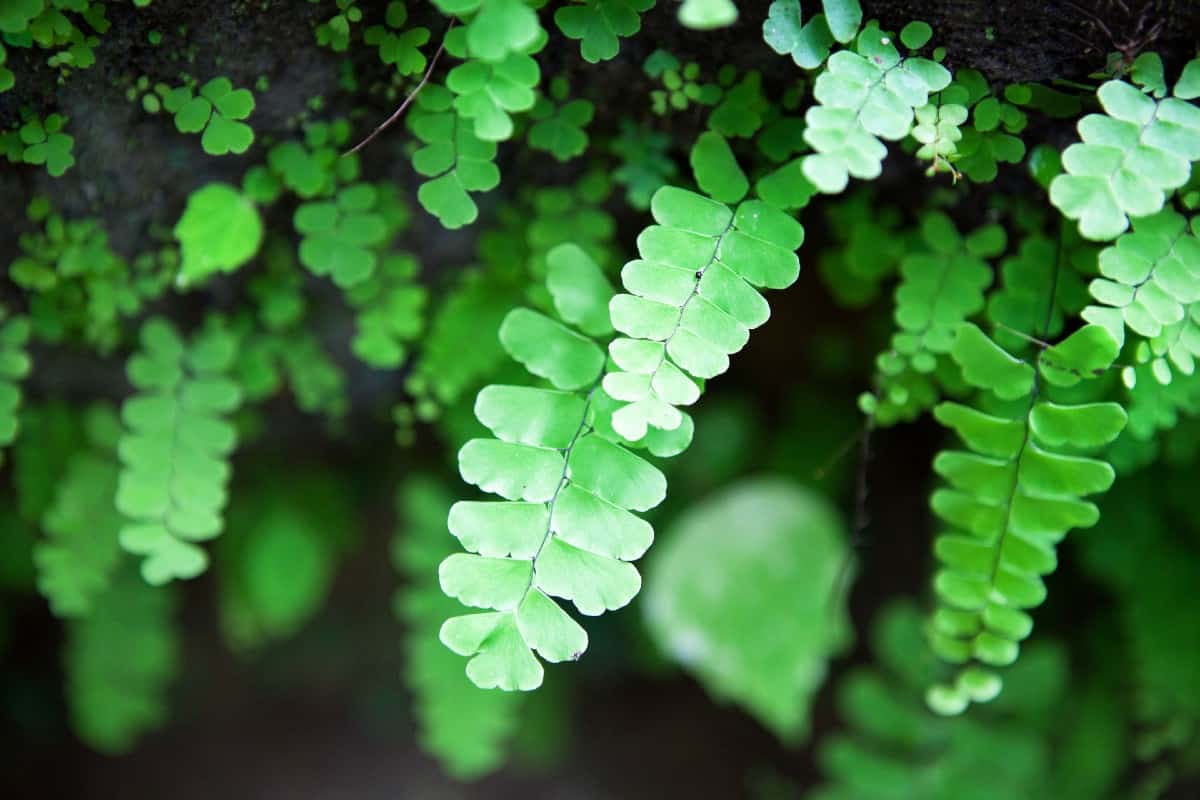
The old world climbing fern is delicate, so it adds a soft feeling to a shade-filled home. The foliage is green-gray and thrives in mass plantings. This fern works best as a houseplant to keep from invading nearby plants.
Never plant these bright-green colorful ferns outside. The old world climbing fern is on the list of invasive plants in cypress swamps, where the infestation alters the entire ecosystem.
American Climbing Fern (Lygodium palmatum)
The only species of climbing ferns native to eastern North America, the American climbing fern is sometimes called the Hartford fern for the plant’s hometown of Hartford, Connecticut. However, it grows in wild, natural areas in Georgia and South Carolina, too.
Like other wild ferns, it grows forever and twines around vegetation. However, this type of greenery is a threatened species in many states. Plant an American climbing fern inside. For optimum growth, grow these ferns that like full sun in a bright location and keep the slightly acidic soil wet.
Bushman’s Mattress (Lygodium articulatum)
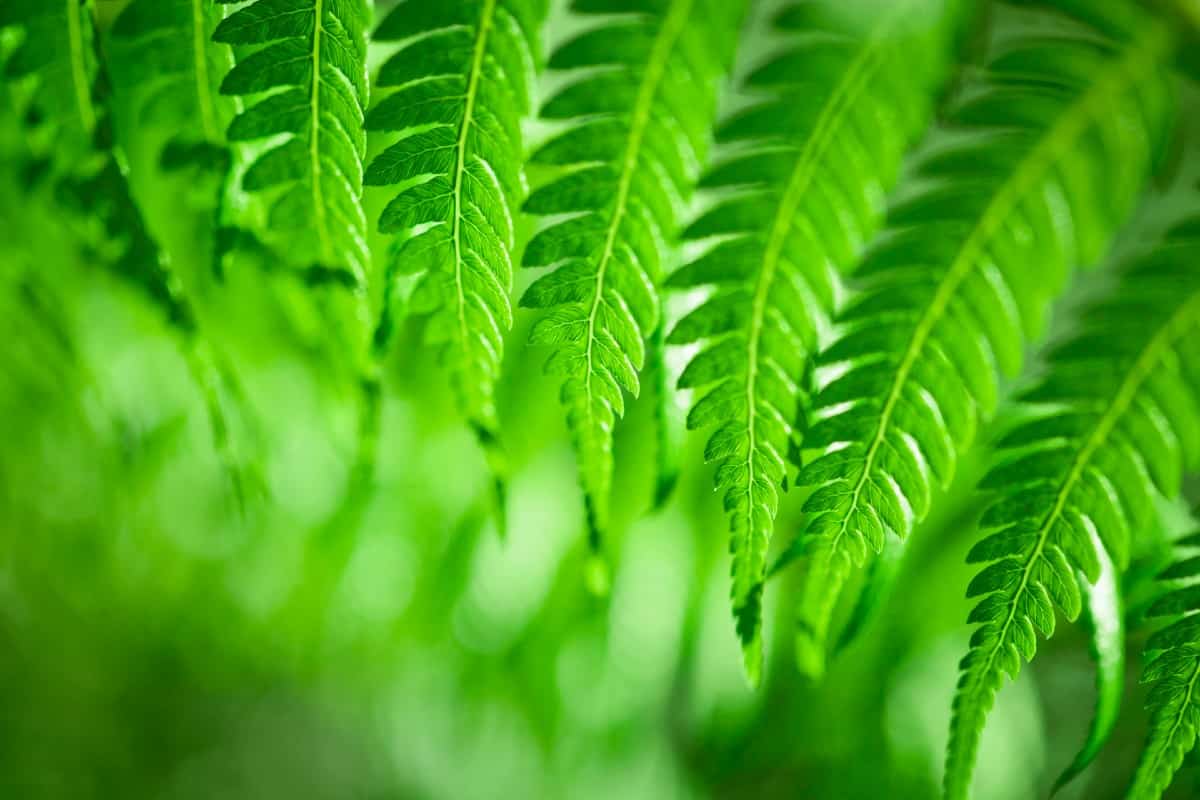
Originally from New Zealand, the bushman’s mattress is a unique fern. It grows in a vine-like pattern that spreads out into a canopy. This plant reproduces quickly, sometimes extending over 10 feet high into the tree canopies overhead.
The leaves drape down from that height, where they transform into curtains of foliage and twiggy vines.
Like most non-native plants, the bushman’s mattress is invasive in some parts of North America. This climbing fern relies on neighboring plants to hold onto. Plant it in partial shade.
Asparagus Fern (Asparagus densiflorus) – An Indoor Fern
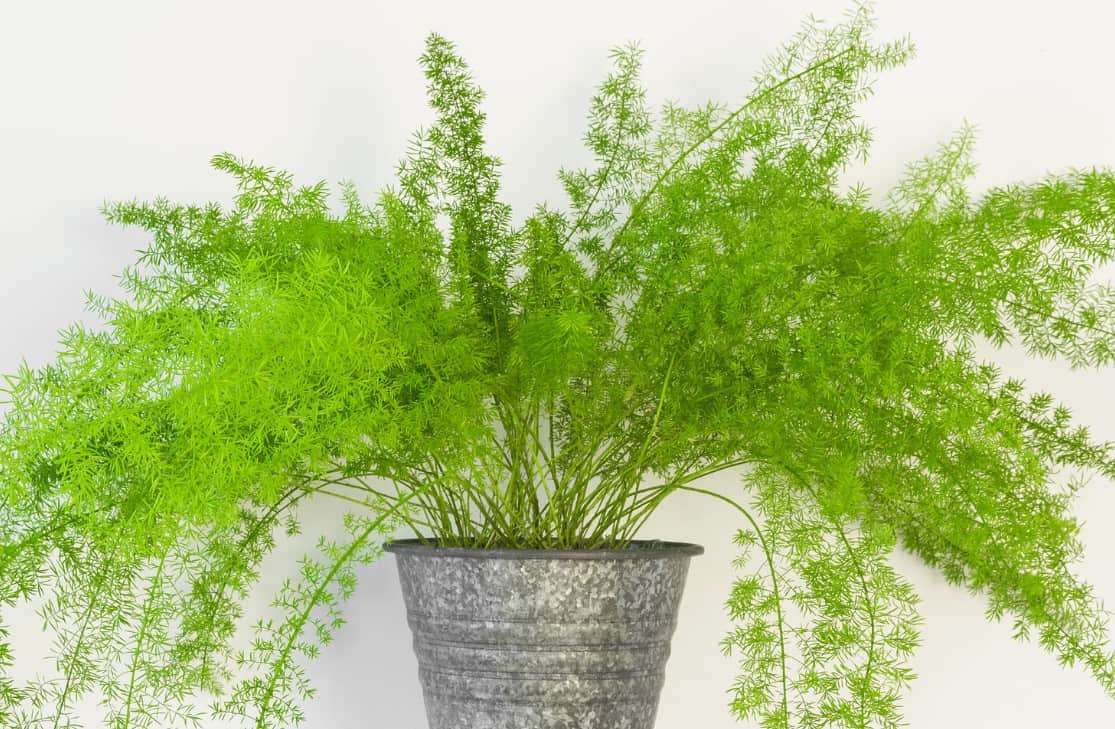
Although the asparagus fern is not technically a fern, the plant trails and looks stunning in a hanging basket. This plant is part of the Liliaceae family, which means it’s not invasive. You might see it called a foxtail fern as well.
Grow the asparagus fern outside in a partly sunny location for proper foliage growth or hang it in a basket from your deck. The arching plumes contain soft, needle-like foliage that prefers colder zones. It grows as a perennial in hot regions.
Add compact climbing roses to your asparagus fern display for some eye-catching contrasting colors.
Wild Asian Fern (Lygodium circinatum)
The wild Asian fern is from China, India, and Sri Lanka. In eastern Asia, it is food, medicine, a tying material, and used for traditional basket weaving.
The evergreen has short creeping rhizomes that elongate and scramble infinitely. It grows as long as you let it, often twining around the plants nearby for more support and sunlight. Sometimes this is an issue in a garden.
As a houseplant, provide the wild Asian fern with plenty of sunlight so it thrives. Use it to shade other houseplants for medium light or hide ugly structures around your home.
Staghorn Fern (Platycerium alcicorne) – Perfect for Hanging Indoors
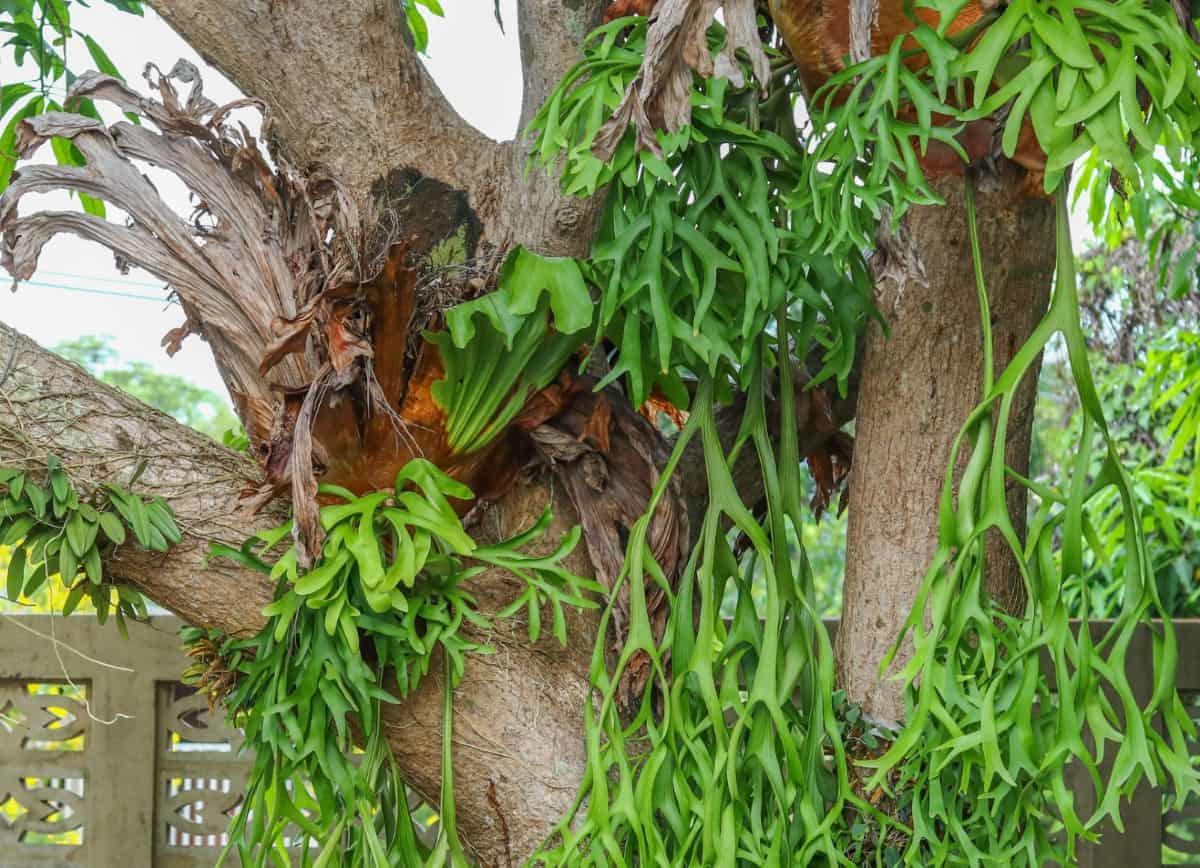
A trendy houseplant in recent years, people adore the staghorn for its rare leaves. The fronds on a staghorn fern appear similar to the antlers on a stag.
The basal leaves and fronds rise from the root-like stem, making it great for hanging baskets or an accent piece on the wall. Indoors, the staghorn fern enjoys shade and moderate moisture.
Expect the leaves to turn brown eventually. Spores on the fronds reproduce the plant with plenty of humus-rich soil.
Foliage with tons of texture is an exciting addition to any garden. Whether you hope to plant indoors or out, a fern that climbs or trails adds drama and dimension.
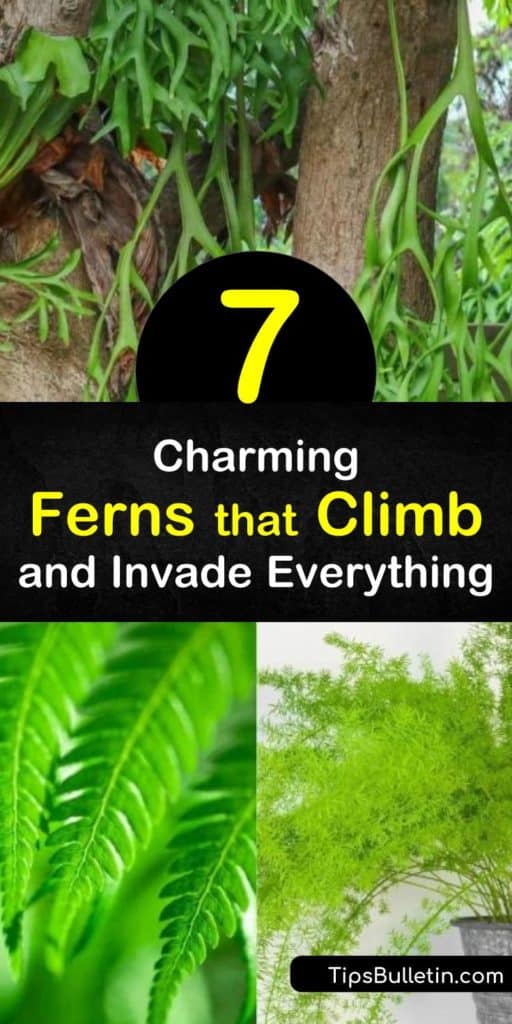
What plants are your favorite? If you found our article about climbing ferns productive, please share our gardening advice with your friends on Pinterest and Facebook.